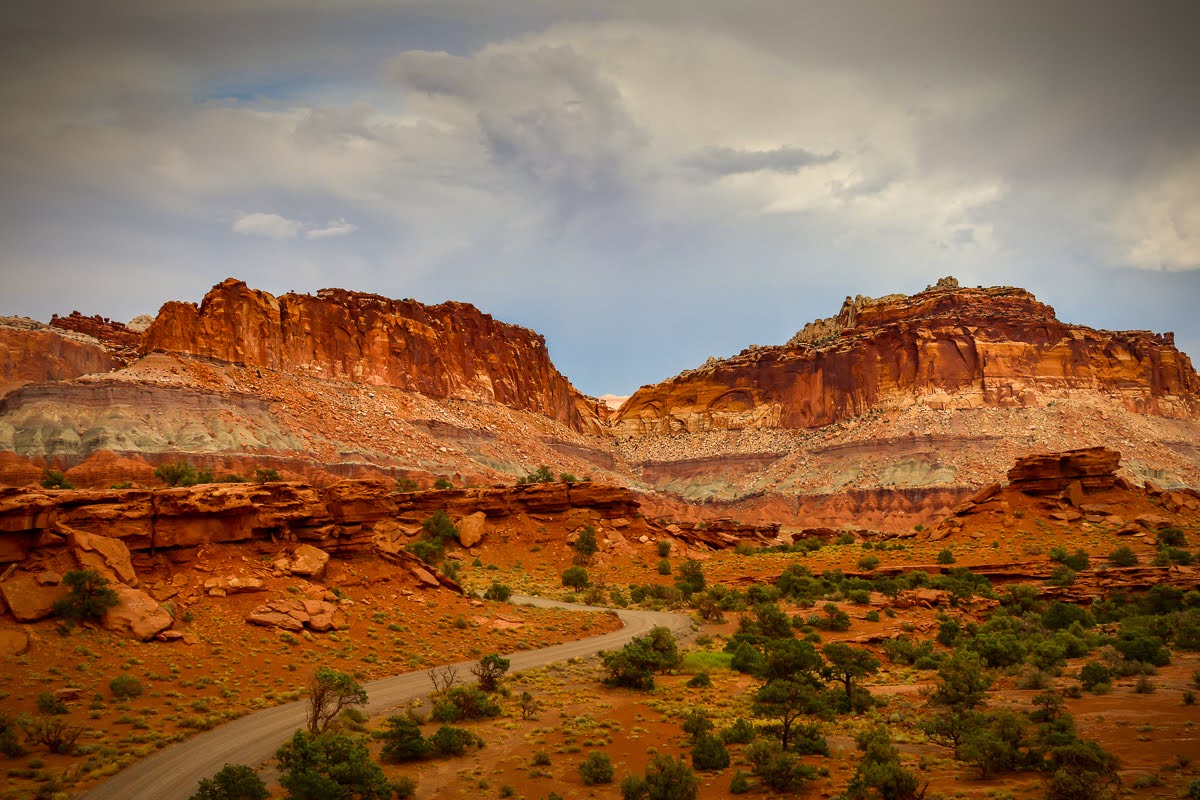Last updated on April 24th, 2025 at 11:02 am

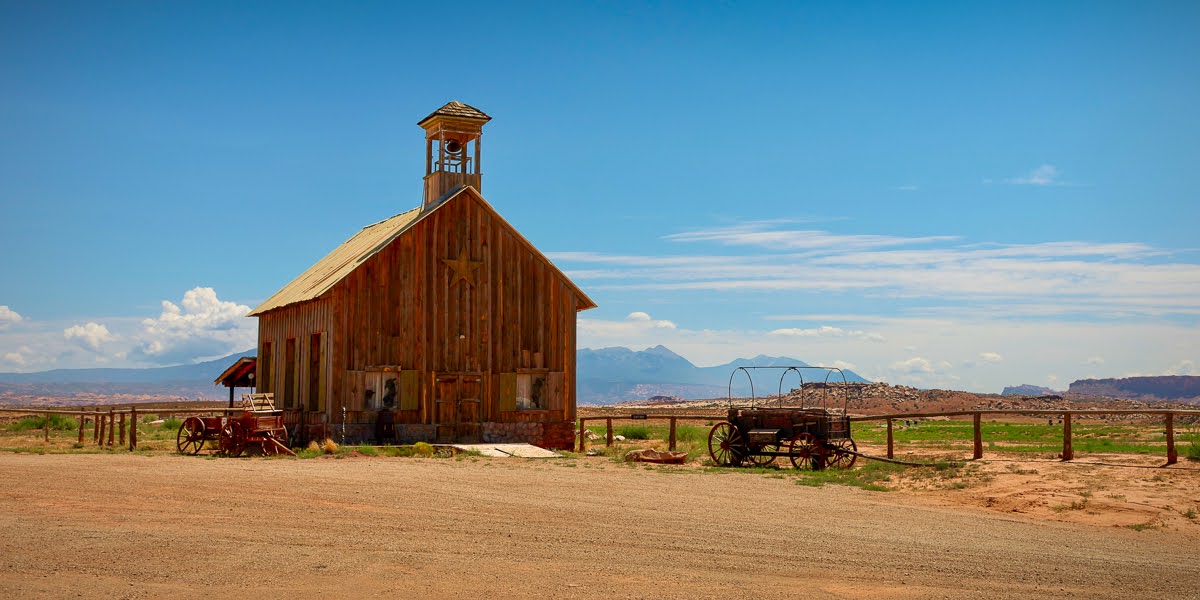
Visiting Capitol Reef and wondering where to stop and what to do? This one-day guide details all of the best things to do at Capitol Reef National Park in one day, including visiting the Fruita Historic District, taking in the Petroglyph Panels, picking fruit at the orchards, tasting delicious pies, and more!
Hi there! I’m Anthony Curione from Curione Travel. I have traveled to 15 countries and countless national parks and love inspiring others to embrace the beauty of the world around them.
Capitol Reef National Park, in South-central Utah, is one of my favorite national parks. The rugged sandstone domes, wildlife, and other features make it unique and distinguish it from most national parks. The red rock throughout the park embodies a true sense of southern Utah, and the fresh fruit and desserts make this park truly special.
Save this guide to ensure the best day trip to Capitol Reef National Park!
A Day Trip Guide to Capitol Reef National Park
At Capitol Reef National Park in Utah, you can experience red rock landscapes, freshly baked pies, stunning scenic drives, ancient historical petroglyphs, and orchards where you can pick your own fruit—all in one incredible park.
Whether you’re a hiker, history buff, foodie, or admirer of landscapes, this guide will show you how to have an unforgettable day in Capitol Reef!
1. Take a Scenic Drive Through the Park
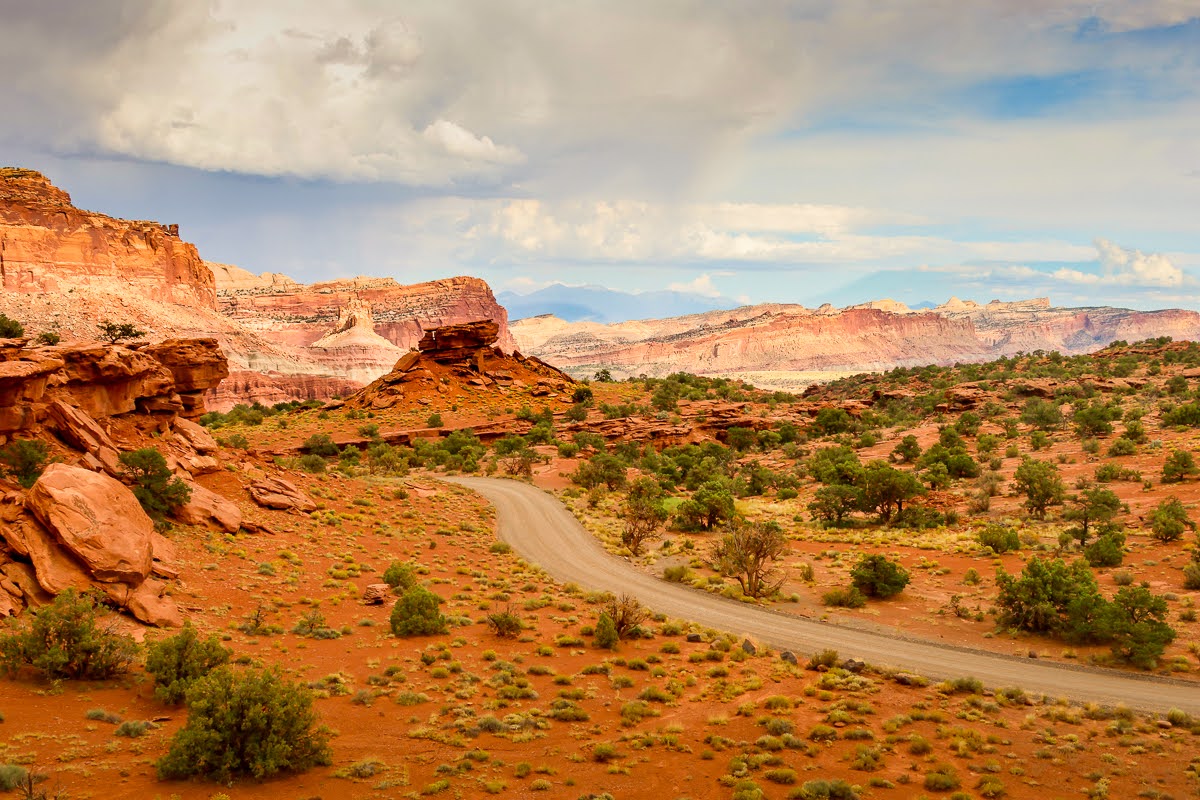
Utah boasts world-class scenery. In Capitol Reef National Park, there is sandstone as far as the eye can see. Endless views of red cliffs, layered rocks, and sprawling desert make the scenic route a must-do.
The scenic drive is 7.9 miles one way. Various unpaved roads branch off the main route and can be driven on. However, these roads should not be used unless you’re in a car with off-road tires.
Along the way, keep a lookout for the following landmarks:
- Fruita Orchards: small farms located throughout various portions of the park with traces of early Mormon settlements.
- Grand Wash: a dramatic canyon with towering walls and hiking trails.
- The Castle: a large rock formation that resembles a fortress.
- Chimney Rock: a unique spire of red sandstone.
- Capitol Gorge Spur: a dirt road that leads to petroglyphs and pioneer carvings.
Some of my favorite scenery was seen by taking the scenic drive through Capitol Reef National Park. You can find the National Park’s guide to the scenic drive here.
For a nearby park with views as grand as Capitol Reef’s, check out the best things to do in Zion National Park.
2. Visit the Fruita Historic District
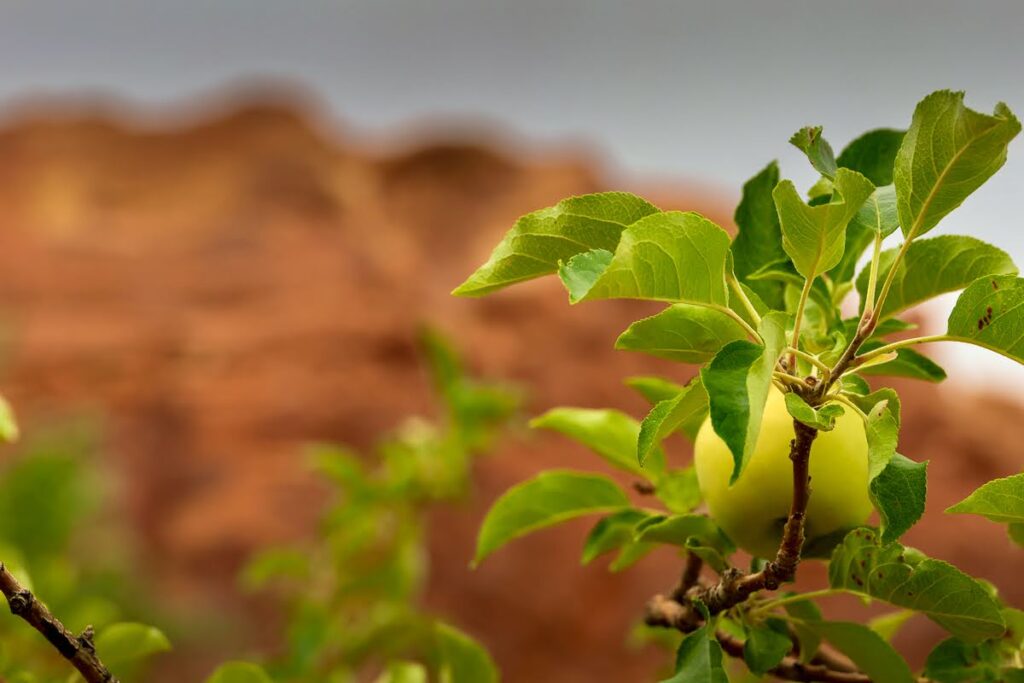
Nestled in the Fremont River Valley, the Fruita Historic District is known for its orchards, where visitors can pick their own fruit. This unique opportunity makes Capitol Reef stand out among other parks. What better than to take a souvenir of fresh fruit on the way home?
The Fruita District was settled in the 19th century by Mormon Pioneers. Along the drive through the district, many plaques explain the park’s and Mormon settlers’ origins.
Visit the Fruita Orchards from mid-June to early July for cherries and apricots. Peaches and pears are ready to be picked from August to September. For apples, head to the orchard from August to October. (Bear in mind that these dates are weather-dependent and can vary slightly from year to year.)
I visited Capitol Reef in the summer and picked some delicious green apples!
Also, while in the Fruits Historic District, look for wildlife. Many deer and squirrels love to roam around and graze on whatever fruit is in season!
3. See the Petroglyph Panels
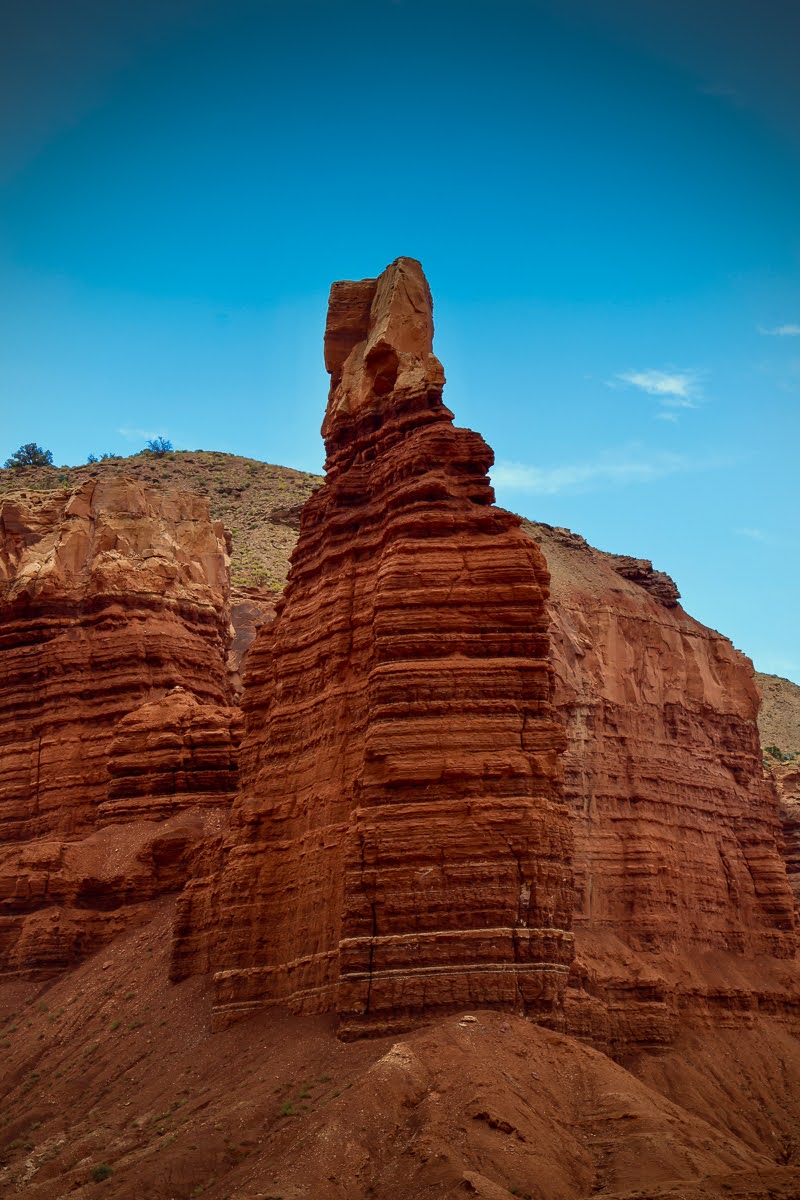
The best way to learn about Capitol Reef’s Ancient history is to visit the Petroglyph Panels. The depictions on the walls offer a glimpse into the lives of the Freemont people who lived in the region over 1,000 years ago.
The Petroglyph Panels are located along Utah’s Highway 24 near the Fruita Historic District. To find them, look closely for dark, etched symbols among the red sandstone rock.
Some petroglyphs along the walls depict human-like forms with triangular bodies, headdresses, and arms and legs. Other symbols are animal-like, with mysterious markings and unknown meanings.
The best time to enjoy these petroglyphs is early morning or late afternoon to avoid heavy glare on the rock. This allows for a better view of the markings.
Make sure to treat the petroglyphs with care and avoid touching or damaging them.
4. Eat Some Gifford Homestead Pies
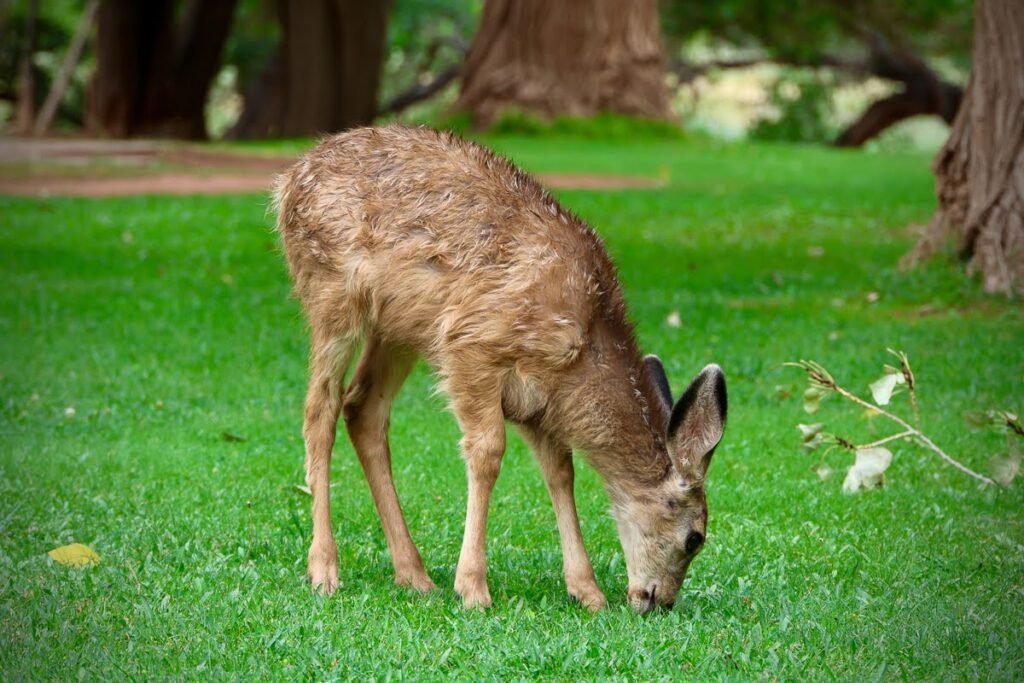
Within Capitol Reef National Park is Gifford Homestead, renowned for its freshly baked fruit pies with fruit from the orchards.
Fun Fact: Pie season at the Homestead typically starts on March 14, pi day, and ends in late November.
Make sure to visit the Homestead early in the day as pies typically sell out by afternoon every day!
For those wanting another tasty treat, the Gifford Homestead store also sells homemade ice cream, cinnamon rolls, and locally made goods!
Outside the Homestead is a dedicated picnic area where you can eat dessert and catch glimpses of deer strolling around the park.
The Best Time to Head to Capitol Reef National Park
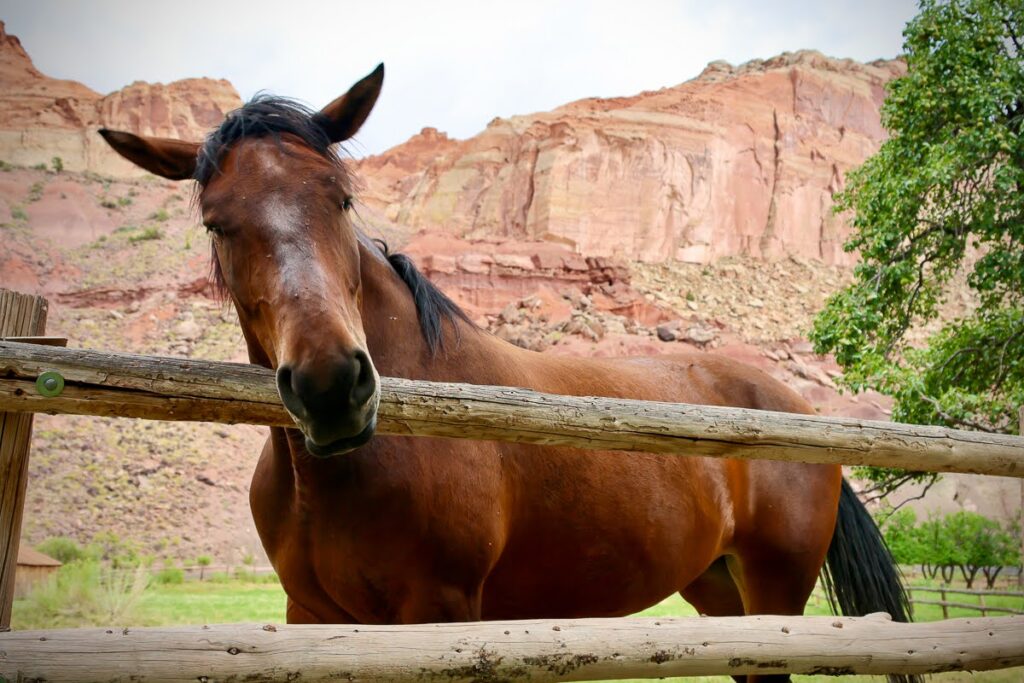
Capitol Reef National Park offers a variety of attractions based on the time of year. Generally, Spring and Fall offer the best weather and ideal conditions for exploring the park.
Here’s more information for visiting Capitol Reef National Park during each season:
Spring weather ranges from 60 to 80 degrees F, with nights becoming a bit cooler. During this time, look for blooming wildflowers that add a vibrant color to contrast the red sandstone rock. For hikers, spring offers pleasant temperatures for exploring trails! Crowds start to increase during the spring, but not as much as in summer.
Summer in Capitol Reef National Park is hot, sometimes exceeding 90 degrees F. It is also monsoon season, and heavy rains can often cover the park with short notice. Summer provides long daylight hours for exploration, with early morning and late evenings being optimal for photograph opportunities.
The park’s weather is more comfortable in the fall than in the summer, with temperatures cooling to around 60 to 80 degrees F. The nights in the park get much cooler than in the summer. Apple picking is best in the fall, and crowds start to slow down during this time.
Capitol Reef is best in winter for those looking to escape the crowds. The white snow and red sandstone create a stunning contrast that makes the park even more beautiful. Winter temperatures are cold, ranging from 30 to 50 degrees. Nighttime temperatures often drop below freezing. Keep in mind that some facilities may be closed due to snowy or icy conditions.
How to Get to Capitol Reef National Park
The best way to get to Capitol Reef National Park is by car.
If you fly, arrive at Salt Lake City, UT, Las Vegas, NV, or Grand Junction, CO. These bigger cities offer cheaper flights than a regional airport closer to the park.
The distance from Salt Lake City, UT, to Capitol Reef National Park is 220 miles, and it takes around 4 hours to arrive by car. To get there, take Interstate 15 to UT-24.
The drive from Las Vegas, NV, will take about 6 hours and cover about 360 miles. Again, the route to Capitol Reef includes I-15 and UT-24.
The distance from Grand Junction, CO, to Capitol Reef is approximately 160 miles, and the drive takes approximately 3 hours via I-70 and UT-24.
Capitol Reef National Park Lodging Options
A variety of options are available for staying at or near Capitol Reef.
Developed Camping in Capitol Reef National Park
Sites at Capitol Reef’s only developed campground, Fruita Campground, can be reserved 6 months in advance.
If you plan on visiting during the busy summer season, be sure to be ready to book precisely six months before your arrival date, as the campground is very popular.
Primitive Camping in Capitol Reef National Park
Two free primitive campgrounds are located in remote sections of the park: Cathedral Valley Campground and Cedar Mesa Campground. Learn more about them here.
Dispersed Camping outside Capitol Reef National Park
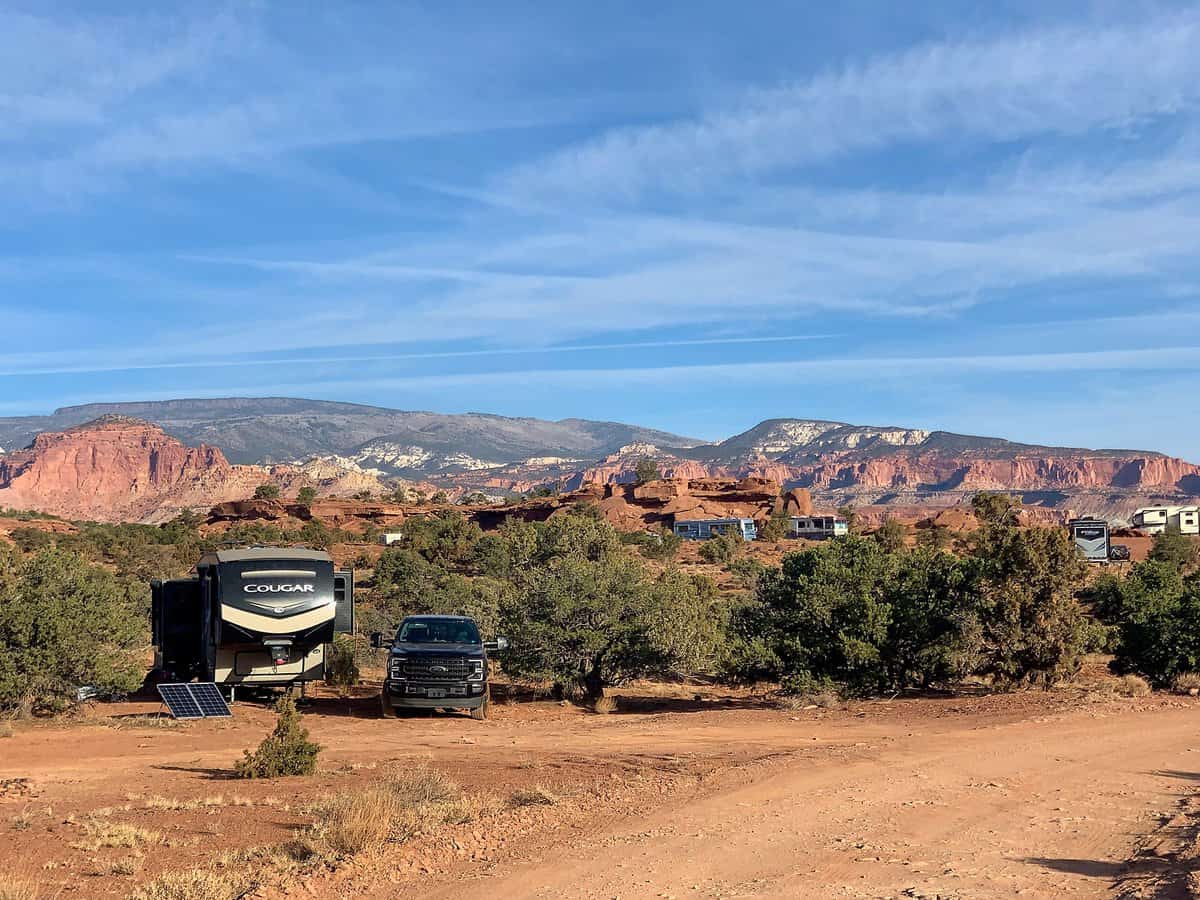
Tents and RVs can boondock on BLM land in Torrey, Utah, very close to the park’s entrance.
Capitol Reef National Park Hotels & Vacation Rentals
Near the park, there are many hotel and VRBO options. Use the map below to explore your options!
Summary: Your Ultimate One-Day Itinerary for Capitol Reef National Park
Capitol Reef offers some seriously stunning views and is a park with interactive activities for everyone to enjoy! Whether it is the layered red sandstone, playful farm animals, fresh fruit pies, or breathtaking hikes, the park is a must-visit for any national park enthusiast.
This guide provides some of the best activities to make the most of a 1-day visit to Capitol Reef National Park. Make sure to save this post for an unforgettable experience in a truly unique park!
You May Also Enjoy:
👉 16 Best Bryce Canyon Hikes and Experiences in the National Park
👉 Locals Know Best Podcast Ep. 008: Southern Utah
👉 The Ultimate One Day Badlands National Park Road Trip Itinerary
- 4 Epic Things to Do at Capitol Reef National Park: A One-Day Guide - December 20, 2024

